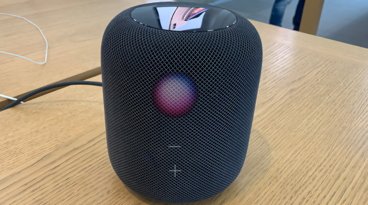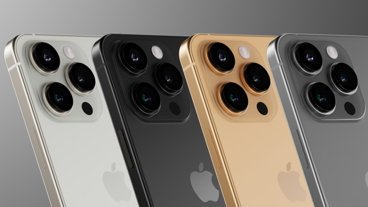Apple commits $3.9 billion to secret long term component contracts
Cook noted that the secret deals were a "fantastic" use of the company's cash reserves, which have now grown into a $59.7 billion stockpile.
When asked what components were involved in those long term commitments, Cook answered, "I don't want to give it out, because I view it as a competitive… something I don't want our competition knowing."
Cook references A4, RAM as examples
Cook added, "Let me talk in general. From our point of view on design side, we design components where we believe we can innovate beyond the market. Most recent example, A4 chip. With the A4 chip, we didn't think we had to invest in a fab [chip manufacturing facilities], so we focused on design."
"On the operational side of house," Cook stated, "we've historically entered into agreements with others to supply; largest one was with flash memory suppliers back in 2005 that totaled over a $1 billion, because flash would become increasingly import across product line and industry."
Apple is now the world's largest consumer of memory chips, in large part because it bundled large amounts of flash RAM in its iPods, and subsequently introduced the iPhone with far more memory storage than other smartphones, beginning with 4 to 8GB on the original iPhone at a time when most smartphones shipped with 256 to 512MB of storage.
"We think that was an absolutely fantastic use of Apple's cash," Cook said of the company's decision to pre-purchase a billion dollars of flash RAM, "and we constantly look for more of these. In the past several quarters, we've identified another area and come to recent agreements."
Nearly $4 billion of component strategy
Cook described the deal as "similar to flash agreement, focused in an area that we feel is very strategic," but said he would "prefer not to go into more details about what specific area it's in, but it's the same kind of thinking that led us to those deals."
Cook had earlier discussed the generally favorable pricing environment for components that had reduced the company's costs in the quarter more than expected, and noted that going forward one could "expect a favorable pricing environment for DRAM," while "some prices for raw materials such as key metals are currently increasing due to anticipated strengthening of worldwide economy. Bulk of other commodities from NAND to LCDs to batteries and most others are generally in supply/demand balance."
Components that may be considered strategic enough to warrant a $4 billion advanced commitment may include the rumored very high resolution Retina Display anticipated for iPad 2, or may relate to the custom design technology Cook discussed regarding the A4, such as component supply capacity for the coming A4 replacement, Apple's custom battery designs, or a combination of commodity parts, custom fabrication or Apple's original chip designs, and state of the art components.
 Daniel Eran Dilger
Daniel Eran Dilger













 Amber Neely
Amber Neely
 Thomas Sibilly
Thomas Sibilly
 AppleInsider Staff
AppleInsider Staff
 William Gallagher
William Gallagher
 Malcolm Owen
Malcolm Owen
 Christine McKee
Christine McKee









70 Comments
Kick-ass touch screen panels, and high capacity batteries.
Black turtle necks and blue jeans...
Ahahaha!!! Apple is going to freeze out the competition on the availability of high-quality tablet displays at the ~10" form factor and maybe high-quality 3.5" displays for the iPhone and iPod touch.
Fairy dust!
The most obvious components are LCD and batteries. I see Apple putting in some work to get outstanding battery life. They even claimed to use their own chemical composition. But LCDs, I'd be somewhat surprised that Apple would be the one that's engineering the breakthroughs. They might just be securing them.
Is it possible this also alludes to their liquid metal licensing?
Nah, they bought the liquid metal company outright several months ago. They own it lock, stock, and barrel.